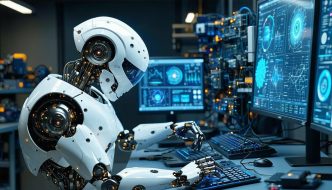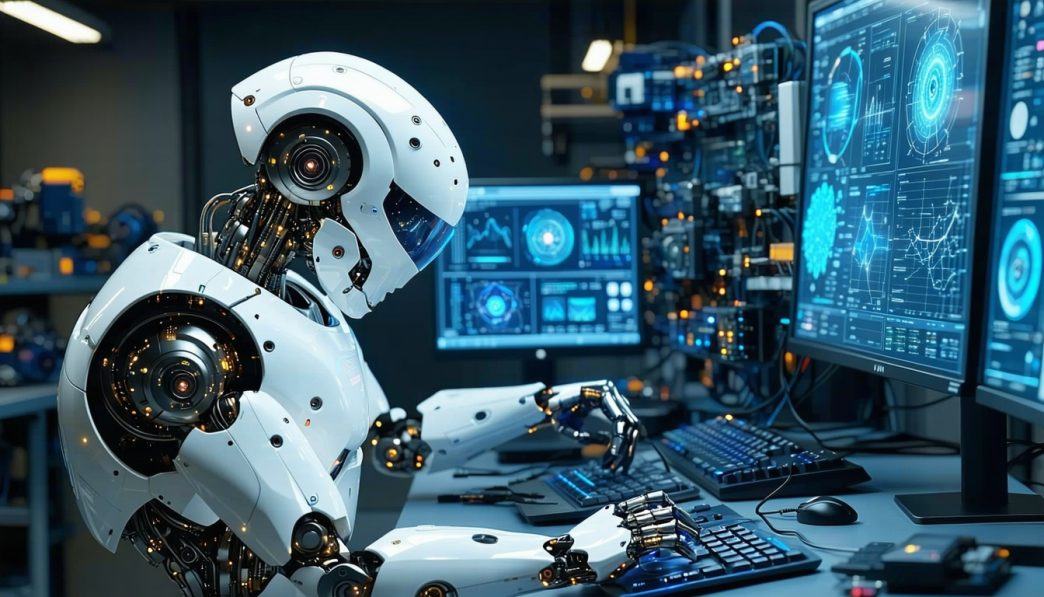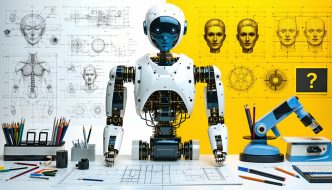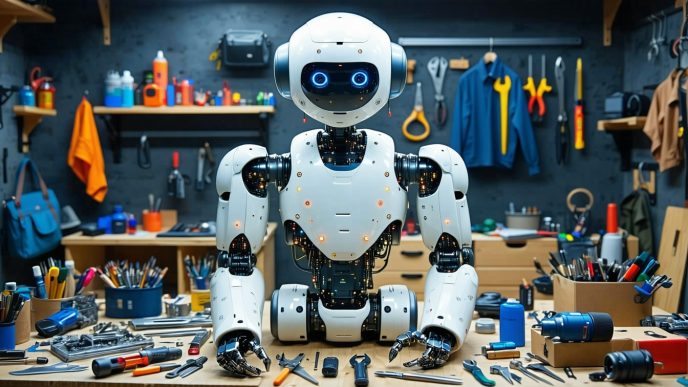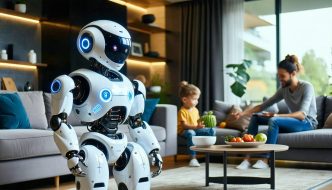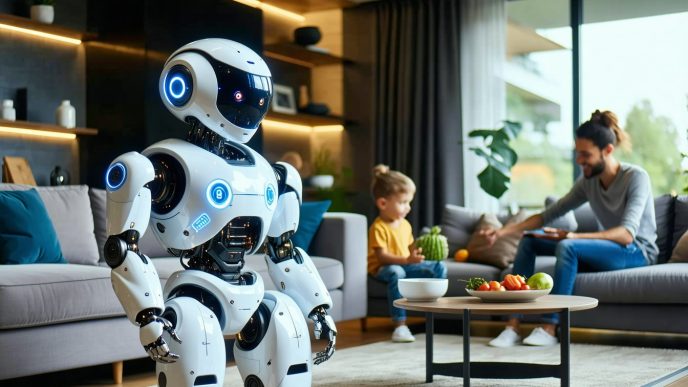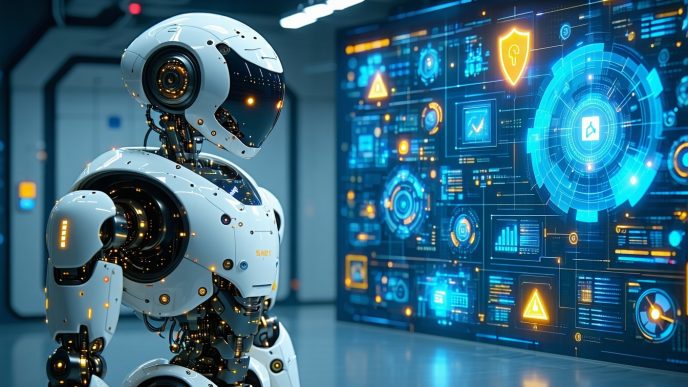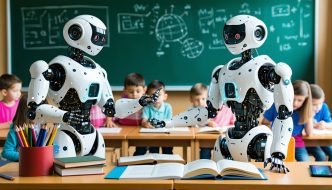Intro to Humanoid Robots
Role and Importance of Humanoid Robots
Humanoid robots serve a variety of functions, making them integral to advancements in robotics and artificial intelligence. Designed to resemble human form and behavior, these robots are capable of performing tasks that enhance daily life, assist in various industries, and even provide companionship. They play a significant role in sectors such as healthcare, education, and security, offering innovative solutions to everyday challenges. For more insights into specific applications, refer to our articles on humanoid robots in healthcare and humanoid robots for companionship.
The Need for Proper Maintenance
To ensure optimal performance and longevity, proper maintenance of humanoid robots is crucial. Regular upkeep helps prevent malfunctions and ensures these robots operate efficiently. Neglecting maintenance can lead to performance degradation, increased repair costs, and decreased functionality.
Maintaining a humanoid robot involves several key areas, including cleaning, battery care, software updates, mechanical inspections, and sensor maintenance. Each of these components contributes to the overall effectiveness of the robot. Below is a table outlining the different areas of maintenance and their importance:
| Maintenance Area | Importance |
|---|---|
| Cleaning and Dusting | Prevents dust accumulation that can harm sensors and mechanisms. |
| Battery Maintenance | Ensures reliable power and prolongs battery lifespan. |
| Software Updates | Enhances features, improves performance, and addresses security vulnerabilities. |
| Mechanical Inspection | Detects wear and tear, ensuring safe operation. |
| Sensor Care | Maintains accuracy in perception and functionality. |
Investing time and effort into humanoid robot maintenance is essential for maximizing the benefits these advanced machines offer. Proper care ensures they fulfill their intended roles effectively while minimizing the potential for issues to arise. For more information on the maintenance procedures, refer to our overview on what owners need to know.
Cleaning and Dusting
Keeping a humanoid robot in good condition requires regular cleaning and dusting. Dust and debris can accumulate over time, potentially affecting the robot’s performance and functionality.
Importance of Regular Cleaning
Regular cleaning of humanoid robots is essential for several reasons:
- Performance: Dust and grime can interfere with sensors and moving parts, impairing the robot’s ability to function correctly.
- Longevity: By maintaining a clean exterior, owners can prolong the lifespan of the robot and minimize the need for repairs.
- Aesthetics: A clean robot presents a more appealing appearance, especially if it is used in home environments or public spaces.
The maintenance routine should include both exterior and interior cleaning to ensure all components operate smoothly.
Tools and Methods for Cleaning
The following table outlines common tools and methods used for cleaning humanoid robots:
| Cleaning Tools | Purpose | Recommended Use |
|---|---|---|
| Microfiber Cloth | Wiping surfaces without scratching | Regular dusting |
| Soft-Bristled Brush | Removing dust from delicate areas and sensors | Sensor cleaning |
| Isopropyl Alcohol | Disinfecting surfaces and removing stubborn stains | Spot cleaning |
| Compressed Air | Blowing dust from hard-to-reach spaces | Interior cleaning |
When cleaning, it is important to follow proper techniques to avoid damaging sensitive components. For example, using a microfiber cloth reduces the risk of scratches, while compressed air helps dislodge dust without direct contact.
Through consistent cleaning routines and suitable tools, owners can ensure their humanoid robot remains operational and visually appealing. Regular maintenance contributes to the overall efficiency and effectiveness of these advanced machines, supporting their intended uses, whether in humanoid robots for home use or other applications.
Battery Maintenance
Maintaining the battery of a humanoid robot is essential for its optimal operation and longevity. Understanding how robot batteries function and how to care for them can enhance performance and prevent premature battery degradation.
Understanding Robot Batteries
Humanoid robots typically utilize rechargeable lithium-ion batteries, known for their high energy density and long lifespan. These batteries provide the necessary power for a robot’s various functions, including movement, sensors, and processing capabilities.
Common Battery Specifications
The following table outlines essential specifications of humanoid robot batteries:
| Specification | Description |
|---|---|
| Capacity | 2000 – 5000 mAh |
| Voltage | 7.4 – 14.8 V |
| Charge Cycles | 300 – 1000 cycles |
| Weight | 500 – 1500 grams |
Charging and Battery Care
Correctly charging and maintaining robot batteries can significantly extend their life. Here are some key points to consider regarding battery charging and care:
-
Charging Routine: It is advisable to charge the robot’s battery regularly, especially after extended use. Avoid letting the battery completely drain, as this can lead to reduced capacity over time. A standard charging cycle should be adhered to for optimal longevity.
-
Charging Environment: Ensure the robot is charged in a cool, dry environment. Extreme temperatures can adversely affect battery performance. For detailed insights on charging systems for humanoid robots, refer to our article on humanoid robot charging systems.
-
Battery Monitoring: Many humanoid robots come equipped with battery management systems that monitor the state of the battery. Regularly check these systems for any alerts regarding battery health.
-
Storage: If the robot will be unused for an extended period, store it with a 50% charge. This prevents deep discharge, which can lead to capacity loss.
-
Replacement Indicators: Familiarize yourself with signs that may indicate a battery replacement is needed, such as reduced operating time or failure to hold a charge. Monitoring battery performance can help in timely replacements.
Proper battery maintenance is a vital aspect of humanoid robot upkeep. By following these guidelines, owners can ensure their robots perform effectively for as long as possible, reducing the frequency and costs of replacements. Explore more about humanoid robot maintenance in our article on what owners need to know.
Software Updates
Importance of Software Updates
Software updates play a vital role in the performance and functionality of humanoid robots. These updates often include enhancements that improve efficiency, security, and usability, ensuring that the robot operates optimally. Regular updates can also fix bugs and issues that may arise over time, helping to prevent malfunctions and improve the overall user experience.
Maintaining up-to-date software is crucial for integrating new features and improving compatibility with other systems. A robot equipped with the latest software can better respond to commands and interact with its environment, offering enhanced performance in tasks such as navigation and communication.
How to Update Robot Software
Updating the software of a humanoid robot can differ based on the model and manufacturer. Here are general steps to follow for updating robot software:
| Step | Action |
|---|---|
| 1 | Check for Updates: Regularly visit the manufacturer’s website or connect to the robot’s app to check for available updates. |
| 2 | Backup Data: Before performing any updates, create a backup of important data and settings to prevent loss during the update process. |
| 3 | Download Update: If an update is available, download it directly from the app or website. Ensure a stable internet connection during this process. |
| 4 | Install Update: Follow the prompts provided by the robot software to install the update. This may require the robot to reboot. |
| 5 | Verify Update: After installation, verify that the update has been applied successfully by checking the software version in the settings menu. |
Regular software updates are essential for ensuring robust performance and capability in humanoid robots. For those looking to explore various humanoid robots suited for different tasks, articles such as humanoid robots for home use and humanoid robots in healthcare can provide valuable insights.
Mechanical Inspection
Mechanical inspection is a crucial aspect of humanoid robot maintenance. It ensures that all joints and moving parts function seamlessly, contributing to the overall performance and longevity of the robot.
Checking Joints and Moving Parts
Regularly inspecting joints and moving parts is vital for maintaining the mobility and efficiency of humanoid robots. Owners should pay attention to areas such as elbows, knees, and wrists. Inspecting these areas for wear and tear can prevent malfunctions that may affect the robot’s movements.
| Joint Type | Common Issues | Recommended Inspection Frequency |
|---|---|---|
| Elbow Joints | Stiffness, Misalignment | Monthly |
| Knee Joints | Wear, Loose Components | Monthly |
| Wrist Joints | Reduced Range of Motion | Monthly |
Look for any unusual noises during movement, as they may indicate friction or poor alignment. Ensuring proper alignment will enhance the performance of the humanoid robot, allowing it to execute tasks more effectively.
Lubrication and Preventive Maintenance
Lubrication is an essential part of maintaining the mechanical components of humanoid robots. Proper lubrication reduces friction between moving parts, ensuring smoother operation and extending the lifespan of the robot. Owners should use the recommended lubricants for their specific robot model, as specified in the user manual.
To maintain optimal performance, lubrication should be performed during regular checkups. The frequency of lubrication can vary depending on how often the robot is used. A general guideline is as follows:
| Usage Frequency | Lubrication Frequency |
|---|---|
| Daily Use | Every 1-2 Weeks |
| Weekly Use | Monthly |
| Occasional Use | Every 2-3 Months |
Preventive maintenance practices, such as checking for loose screws and bolts, also play an important role in ensuring the robot remains in good condition. By integrating these practices, owners can avoid costly repairs and maintain the efficiency of their humanoid robots.
Regular mechanical inspections and proper lubrication are integral aspects of humanoid robot maintenance, contributing to smoother operations and enhancing the robot’s functionality in various tasks, such as performing chores or engaging in educational activities. For more tips on maintenance, refer to our article on humanoid robot maintenance.
Sensor Care
Proper sensor care is essential for the optimal functionality of humanoid robots. Sensors allow robots to perceive their environment, making accurate readings vital for effective operation.
Types of Sensors in Humanoid Robots
Humanoid robots utilize various sensors, each serving a distinct purpose. Understanding these sensor types is fundamental for maintenance:
| Sensor Type | Function |
|---|---|
| Proximity Sensors | Detect nearby objects and distances |
| Cameras | Provide visual information |
| Microphones | Capture sound and voice inputs |
| Temperature Sensors | Monitor environmental temperature |
| Gyroscopes | Measure orientation and motion |
| Infrared Sensors | Detect heat and movement |
Each of these sensors plays a critical role in how a humanoid robot interacts with its surroundings. For a deeper understanding of the different types of humanoid robots that incorporate these sensors, check our article on humanoid robot sensors.
Cleaning and Calibrating Sensors
Regular cleaning and calibration of sensors is crucial to maintain the accuracy and responsiveness of humanoid robots. Dust, grime, and smudges can impede sensor performance, leading to incorrect readings.
Cleaning Sensors
- Surface Cleaning: Utilize a soft, lint-free cloth to gently wipe the surfaces of cameras and other sensors. Avoid using abrasive materials that could scratch the lenses.
- Compressed Air: For sensors with small openings, use compressed air to remove dust particles without coming into direct contact.
- Solution Use: In cases of stubborn residues, use a mild cleaning solution safe for electronics. Always apply the cleaning agent to the cloth rather than directly to the sensor.
Calibrating Sensors
- Initial Setup: Calibration often occurs during the initial setup of the robot. Follow provided manufacturer guidelines to ensure proper calibration.
- Routine Checks: Periodically check sensor calibration, especially after significant movements or adjustments to the humanoid robot.
- Software Calibration: Use accompanying software tools to perform electronic calibration processes. Adjust the settings as necessary to ensure precise measurements.
Maintaining sensors is a key aspect of overall humanoid robot maintenance. Regular care will not only prolong the lifespan of the robot but also enhance its functionality in various tasks.
Troubleshooting Basics
Humanoid robots may face various issues during operation. Understanding common problems and how to diagnose them is essential for effective humanoid robot maintenance.
Common Issues with Humanoid Robots
Several frequent issues can arise with humanoid robots, often related to their mechanical, electrical, or software components. Below is a table summarizing some of the most common problems.
| Issue Type | Description |
|---|---|
| Power Failure | Robot does not power on or shuts down unexpectedly. |
| Connectivity Issues | Problems with Wi-Fi or Bluetooth connections. |
| Sensor Malfunction | Sensors providing inaccurate data or failing. |
| Software Glitches | Robot acting unpredictably or crashing. |
| Mechanical Wear | Joints or moving parts showing signs of wear or damage. |
Steps to Diagnose Problems
When troubleshooting a humanoid robot, following a systematic approach can help identify and resolve issues effectively. Here are essential steps to consider:
-
Check Power Supply
Ensure the robot is properly charged and all connections are secure. Refer to humanoid robot charging systems for guidance. -
Inspect Connectivity
Verify internet and Bluetooth connections. Ensure the robot is within range and the network is functioning correctly. -
Examine Sensors
Check for any visible dirt or obstruction on sensors. Clean sensors as needed and consult our article on humanoid robot sensors for specific care instructions. -
Review Software Settings
Look for available software updates or patches. Outdated software can lead to glitches. Learn more about maintaining software in humanoid robots by visiting humanoid robot software platforms. -
Conduct a Physical Inspection
Inspect moving parts and joints for any signs of wear or damage. Lubrication may be necessary to keep components functioning smoothly. Detailed maintenance tips can be found in the section on mechanical inspection. -
Seek Professional Assistance
If issues persist after troubleshooting, consider reaching out to professionals. For more information on when to seek expert help, refer to our section on professional maintenance.
By following these steps, owners can effectively diagnose and address common issues with humanoid robots, ensuring optimal performance and longevity.
Professional Maintenance
Maintaining a humanoid robot is crucial for its longevity and performance. While routine care can often be managed by the owner, there are situations when professional assistance is essential.
When to Seek Professional Help
Owners should consider professional maintenance in the following scenarios:
- Severe Software Issues: If the robot malfunctions frequently or software errors appear that the owner cannot resolve.
- Mechanical Failures: Visible damage or dysfunction in joints, motors, or other moving parts that require expert repair.
- Battery Problems: Issues related to battery life or performance that cannot be rectified with standard charging practices.
- Sensor Malfunctions: If the robot’s sensors are not functioning as intended and require calibration or replacement.
- Complex Cleaning: Dirty components that are not accessible for regular cleaning or require specialized methods for safe and effective cleaning.
Tips for Finding a Reliable Robot Maintenance Service
When seeking professional help, it’s essential to find a trustworthy service provider. Here are some tips:
| Criteria | Description |
|---|---|
| Research Credentials | Look for technicians with experience in humanoid robot maintenance. Check qualifications and certifications. |
| Read Reviews | Check online reviews and testimonials from previous customers to gauge service reliability. |
| Ask for Recommendations | Reach out to fellow robot owners or community forums for recommendations on quality maintenance services. |
| Inquire About Services Offered | Ensure the service provides comprehensive options, including software updates, mechanical repairs, and sensor maintenance. |
| Evaluate Customer Support | Good customer support indicates a professional service. Look for responsiveness and willingness to answer questions. |
| Compare Costs | Request quotes from multiple providers to ensure reasonable pricing for the maintenance required. |
Thorough research and due diligence can lead owners to the best maintenance services to keep their humanoid robots functioning optimally. Ensuring proper maintenance is an investment in the robot’s long-term usability and efficiency. For owners interested in humanoid robot features, you might want to explore articles on humanoid robots for home use or robot emotions and ethics.
